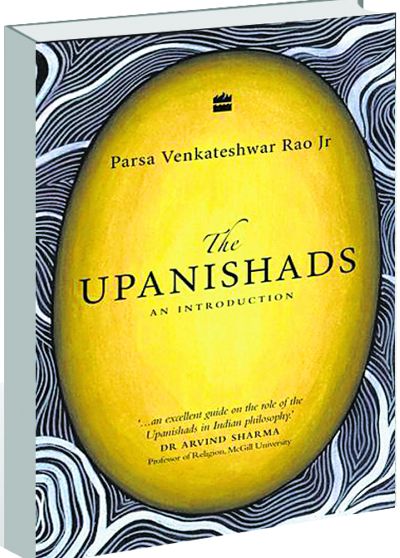The Upanishads: An INtroduction by Parsa Venkateshwar Rao Jr. HarperCollins. Pages 176. Rs 399
Book Title: The Upanishads: An INtroduction
Author: by Parsa Venkateshwar Rao Jr.
Gitanjali Sharma
The essence of Vedas, Upanishads are not separate texts, making it difficult to comprehend and absorb these philosophical teachings and ideas. Dating back to 500 BCE and beyond, these ancient instructions are scattered primarily in the last section of the Vedas. Also known as Vedanta, they can possibly be best unravelled by accepting and understanding their umbilical connect to the Vedas.
As Parsa Venkateshwar Rao Jr sets out to decode these “problematic” and “intractable” texts, he finds a large portion packed with references to other worlds and rituals. Attempting to throw light on the baffling texts (count varying from 108 to 235), he justly clarifies that the challenge lies in reading and understanding them in the context of the time and place they were written.
Spread over the later portions of the four Vedas — Rig, Yajur, Sama and Atharva — there’s little clarity on which Upanishad came first and which later. All that can be attempted apparently is to make sense of the different views expressed in them.
As the title promises, an introduction is what the author strives to provide of the esoteric spread comprising snatches of meditative conversations. Along the course comes a glimpse and, on occasion, an insight into the map laid out by these early texts to understand the self and fathom the universe for what it is.
With a subject so vast and intricate, it takes much attentiveness to keep up with, let alone penetrate, the philosophical exchanges underlining the connection between the “atman” (self) and the “Brahman” (source of all things), and other central themes like liberation from re-death. Dipping into each Veda, the author picks out the key Upanishad ideas it embodies. For instance, the Aitareya Upanishad (which belongs to Rig Veda) highlights “prana” or breath as the animated force that makes the human being the living person he or she is. Building on the theme, the Taittiriyaka Upanishad (in Yajur Veda) dwells on the five elements of the universe, and their corresponding connection with the five senses of the human body.
Even as large portions of the Upanishads have been devoted to understanding the Brahman or the Absolute, some of its most beautiful and poetic passages, the book reveals, are those that declare the inability of the mind to comprehend It.
Arguing that Indian philosophy is a footnote to the Upanishads, Parsa has managed to piece together a broad framework of the fragmented texts. Questions remain undoubtedly, so do many unknowns, only whetting the appetite to delve deeper and unravel the mystique around the Brahman.














